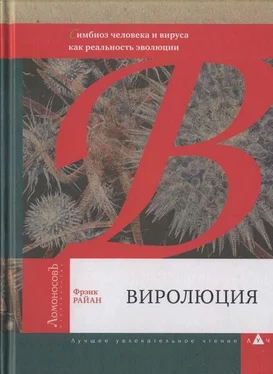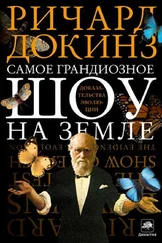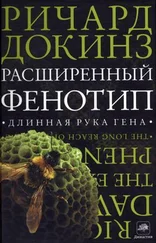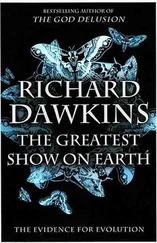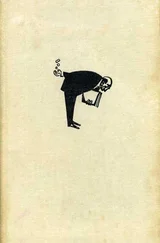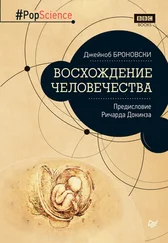Mable В.К., Bogart J. Р. Call analysis of triploid hybrids resulting from diploid-tetraploid species crosses of hylid tree frogs. Bioacoustics 1991; 3:111–119.
Cornai L. The advantages and disadvantages of being polyploid. Nature Reviews Genetics 2005; 6: 836–846.
Gallardo M.H., Bickham J.W., Honeycutt R. L., et al. Discovery of tetraploidy in a mammal. Nature 1999; 401: 341.
Gallardo M.H., Kirsch J.W. A. Molecular relationships among Octodontidae (Mam malia: Rodentia: Cav iomorpha). Journal of Mammalian Evolution 2001; 8: 73–89.
Gallardo M.H., Kausel G., Jiménez A., et al. Whole-genome duplications in South American desert rodents (Octodontidae). Biological Journal of the Linnean Society 2004; 82: 443–451.
Название этой главы взято из статьи Spring J. Hypothesis. Vertebrate evolution by interspecific hybridisation — are we polyploid? Federation of European Biochemical Sciences Letters 1997; 400: 2–8
Ohno S. Evolution by Gene Duplication. New York: Springer Verlag, 1970.
Patterson N., Richter D. J., Gnerre S., et al. Genetic evidence for complex speciation of humans and chimpanzees. Nature 2006;441:1103–8.
Our human history. New York Times 22 May 2006, Editorial.
Detwiller K. M., Burrell A.S., Jolly C.J. Conservation implications of hybridization in African primates. American Society of Primatologists Conference 2003, abstract #127.
Whitfield J. Lovers, not fighters? New genetic signs that modern humans mated with Homo erectus. Scientific American March 2008; 21.
Saey T. Н. First rough draft of Neanderthal genome released. Science News Web Edition 12 February 2009.
Ferrier D.E.K., Minguillón C. Evolution of the Hox / ParaHox gene clusters. International Journal of Developmental Biology 2003; 47: 605–611.
Gibson T. J., Spring J. Evolution of sequences, structures and genomes. Biochemical Society Transactions 2000; 28 (2): 259–264.
Brooke N. M., Garcia-Fernandez J., Holland P. W. H. The ParaHox gene cluster is an evolutionary sister of the Hox gene cluster. Nature 1998; 392: 920–922. See also, Pebusque M.J., Coulier F., Birnhaum D., Pontarotti P. Ancient large-scale genome duplications: phylogenetic and linkage analyses shed light on chordate genome evolution. Molecular Biology and Evolution 1998; 15: 1145–59.
McLysaght A., Hokamp K., Wolfe К. H. Extensive genomic duplication during early chordate evolution. Nature Genetics 2002; 2: 128–129.
Более подробное описание этих исследований и дальнейшие ссылки можно найти в работе: Ryan F.P. An alternative approach to medical genetics based on modern evolutionary biology. Part 5: epigenetics and genomic duplications. Journal of the Royal Society of Medicine 2009: (in press).
Check E. Mix and match: the hunt for what makes us human. Nature «News» 2006; 443: 8.
Holmes В. Magic Numbers. New Scientist 8 April 2006: 38–41.
Bernaud R., Boyer A., Nègre., et al. Prenatal detection of the 17p11.2 duplication in Charcot-Marie-Tooth disease type 1A: necessity of a multidisciplinary approach for heterogeneous disorders. European Journal of Human Genetics 2002; 10: 297–302.
Lucito R., Healy J., Alexander J., et al. Large scale copy number polymorphisms in the human genome. Science 305: 525–528.
Redon R., Ishikawa S., Fitch K. R. Global variation in copy number in the human genome. Nature 2006; 444: 444–456.
Baird P. А.Reducing birth defects in populations. Centre for Health Services and Policy Research, The University of British Columbia, January 1999. HPRU 99: 4D. http://www.chspr.ubc.ca/files/pubhcations/1999/hpru99-04D.pdf.
Yamamoto А., Lucas J.J., Hen R. Reversal of neuropathology and motor dysfunction in a conditional model of Huntington’s disease. Cell 2000: 101: 57–66.
PubMed — англоязычная текстовая база данных медицинских и биологических публикаций, созданная Национальным центром биотехнологической информации (NCBI) США на основе раздела «биотехнология» Национальной медицинской библиотеки США. — Прим. ред.
Weissmann G. Fashions in science: from philosophers’ camp to epigenetics. The Federation of American Societies for Experimental Biology (FASB) Journal 2008; 22: 4033–7.
Телеология — философское учение о целесообразности бытия, оперирующее наличием разумной воли Творца или внутренней силы, потенциально заключающей в себе цель и окончательный результат. — Прим. ред.
Stern C.D. Conrad H. Waddington’s contributions to avian and mammalian development, 1930–1940. International Journal of Developmental Biology, 2000; 44: 15–23.
Уоддингтон ввел термин «эпигенетический» в своей книге «An introduction to Modem Genetics». London: Allen & Unwin, 1939: 154–156.
Spadafora C. A reverse transcriptase-dependent mechanism plays central roles in fundamental biological processes. Systems Biology in Reproductive Medicine 2008; 54: 11–21.
Nanney D.L. Epigenetic control systems. Proceedings of the National Academy of Sciences 1958; 44; 712–717.
Lyon M. F. Gene action in the X-chromosome of the Mouse (Mus musculus L). Nature 1961; 190: 372–373.
Holliday R., Pugh J. Е. DNA modification mechanisms and gene activity during development. Science 1975; 187: 226–232.
Riggs A. D. X inactivation, differentiation and DNA methylation. Cytogenetics and Cell Genetics 1975; 14: 9–25.
Sagar R., Kitchin R. Selective silencing of eukaryotic gene expression. Science 1975; 189: 426–433.
Holliday R. The inheritance of epigenetic defects. Science 1987; 238:163–170.
Jablonka E., Lamb M. J. The inheritance of acquired epigenetic variations. Journal of Theoretical Biology 1989; 139: 69–83.
Maynard Smith J. Models of a dual inheritance system. Journal of Theoretical Biology 1990; 143: 41–53.
Jablonka E., Lachmann M., Lamb M.J. Evidence, mechanisms and models for the inheritance of acquire characteristics. Journal of Theoretical Biology 1992; 158: 245–68.
Читать дальше
